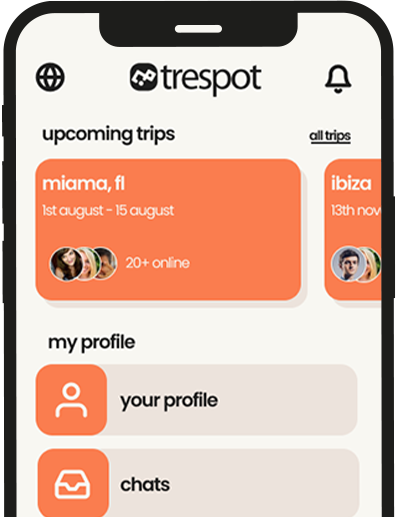Best Time of Year to Visit Croatia (By Month & Interest)
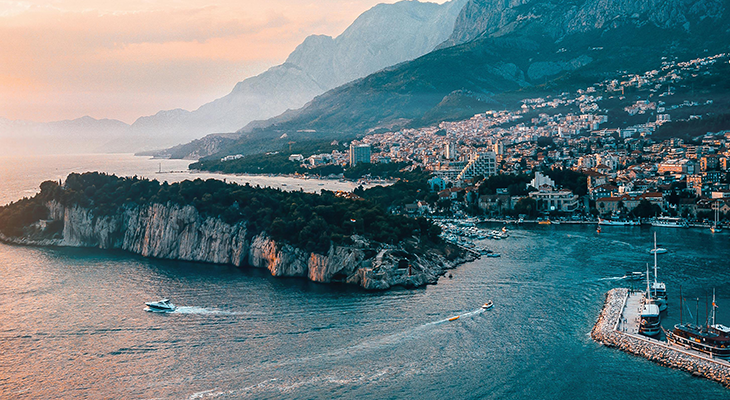
Figuring out the best time of year to visit Croatia depends on what you want most: sun‑drenched island days, crowd‑free culture in medieval cities, thundering waterfalls, or festive winter markets. The Adriatic coast and islands bask in long, bright summers; inland cities like Zagreb bring four distinct seasons. That’s why seasoned travelers—and many top travel editors—favor late spring (May–June) and early autumn (September–October) for the ideal balance of warm weather, swimmable seas, and manageable crowds. In high summer (July–August), Croatia lights up with festivals and perfect beach conditions, but prices and queues soar. Come winter, Zagreb’s Advent markets and quiet coastal stone towns offer a charming, budget‑friendly escape. This guide distills top sources, local events, climate data, ferry realities, and niche seasonal moments (think Hvar lavender and Istrian white truffles) into a clear plan you can actually use. Whether you’re planning to sail between islands, hike national parks, or sip Plavac Mali in a sun‑baked vineyard, you’ll find the right month—and route—to match your style.
Table of Contents
- Quick Answer & How to Choose
- Croatia’s Weather & Microclimates
- Season‑by‑Season Guide
- Month‑by‑Month Snapshot (Jan–Dec)
- When the Sea Is Warmest (Swimming & Sailing)
- Events & Festivals to Plan Around
- Crowds, Costs & Booking Strategy (incl. Ferries)
- National Parks & Active Adventures
- Island‑Hopping Itineraries by Season
- Unique Seasonal Windows (Lavender, Truffles, Harvests)
- Quick Takeaways
- Conclusion
- FAQs
- References
Quick Answer & How to Choose
If you want the highest chance of great weather without summer crushes, pick May–June or September–October. You’ll get pleasant daytime highs, longer daylight, and seas warm enough to swim from late spring through early autumn—especially on the Dalmatian Coast. Beach‑first travelers who love buzzy nightlife and big festivals should embrace July–August; culture‑first travelers and photographers often prefer April–May and late September–October for softer light and easier logistics. Winter (late November–January) is off‑peak but wonderful for Advent in Zagreb and crowd‑free museum days.
- Beach/sailing: late May–September (shoulder months for value; peak for energy).
- Parks & hiking: April–June and Sept–Oct for cooler temps and fuller waterfalls.
- Festivals & nightlife: July (e.g., Ultra Europe) and July–Aug (Dubrovnik Summer Festival).
- Markets & culture on a budget: late Nov–early Jan (Advent) and November city breaks.
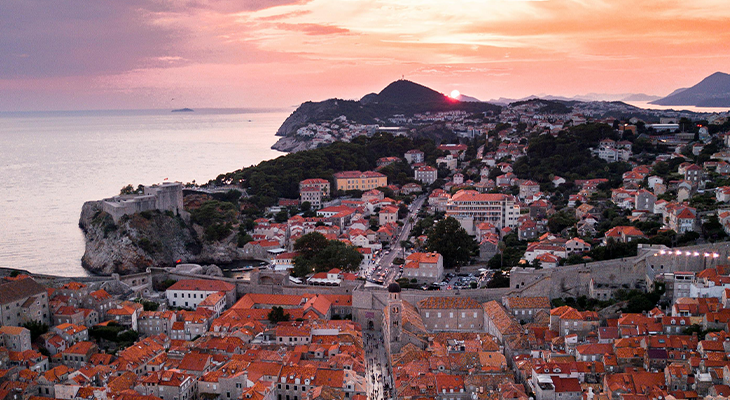
Croatia’s Weather & Microclimates (Coast vs. Islands vs. Inland)
Coast (Dubrovnik, Split): Mediterranean—hot, dry summers and mild, wetter winters. Late spring and early autumn deliver beach‑friendly days without extreme heat. In Dubrovnik in May, average highs climb into the low‑mid 20s °C; in September, highs ease from high‑20s to mid‑20s °C.
Islands (Hvar, Brač, Korčula): Similar to the coast but often slightly warmer sea temps in late summer. The Adriatic is typically warmest in August (often around 25 °C / 77 °F in southern Dalmatia), with July close behind—ideal for long swim days and sailing stop‑offs.
Inland & North (Zagreb, Plitvice, Gorski Kotar): Continental—warmer summers, cold winters, pronounced seasons. Zagreb ranges roughly from sub‑zero winter nights to warm summer highs; Plitvice sits higher and gets cooler; waterfalls impress most in spring after snowmelt.
Season‑by‑Season Guide
Spring (Mar–May): wildflowers, waterfalls, warming seas
Expect comfortable days, rising sunshine, and greenery returning. May is a standout: nearly summer‑like along the coast without the peak‑season squeeze. National parks—Plitvice and Krka—show fuller cascades; hiking temperatures are forgiving. Several ferry routes scale up as summer nears, and most hospitality is open by late spring.
May as the shoulder‑season sweet spot
Coastal highs typically hit the low–mid 20s °C (upper 60s–mid 70s °F). The sea is borderline swimmable early in the month and workable by late May, especially for hardy swimmers. Prices are reasonable, and restaurant choice is broad.
Summer (Jun–Aug): beaches, sailing, festivals
Sunniest stretch and warmest seas. June already feels like high summer; July–August bring peak heat, festival season, and the liveliest nightlife—great for party‑forward islands (Hvar, Pag) and big stages like Ultra Europe (Split). Expect higher hotel prices and queues at icons like Dubrovnik’s walls; plan early starts and late dinners.
Autumn (Sep–Nov): warm seas, harvests, truffles
September combines beach‑worthy water with easing crowds; October is stellar for hiking, cycling, and vineyard visits. In Split, September highs drop from ~29 °C to ~24 °C, keeping island days pleasant; Istria enters white truffle season (Sept–Dec), a foodie magnet.
Winter (Dec–Feb): Advent sparkle, quiet coast
The coast quiets; some island routes thin out, but cities hum with locals. Advent in Zagreb (late Nov–early Jan) is repeatedly celebrated, drawing visitors for lights, mulled wine, and ice rinks. It’s the value season for city breaks; inland is cold and can be snowy—picturesque but pack layers.
Month‑by‑Month Snapshot (Jan–Dec)
- Jan–Feb: Cold inland; very quiet coast; Rijeka Carnival adds color.
- Mar: Shoulder season begins; parks wake; seas still cool.
- Apr: Great for cities and hiking; parks less crowded; seas chilly.
- May: Prime shoulder month—more boats, more sun, near‑summer feel.
- Jun: High summer vibe without full July crowds; sailing is superb.
- Jul–Aug: Peak sun, peak energy, peak prices; Ultra Europe and Dubrovnik Summer Festival run.
- Sep: Warm sea + thinning crowds—often the best all‑rounder.
- Oct: Shoulder value; national parks glow; seas still swimmable early month.
- Nov: Quiet, cultural; truffles in Istria; early Advent setup.
- Dec: Advent in Zagreb delivers festive charm; coastal services limited.
When the Sea Is Warmest (Swimming & Sailing Windows)
For consistent warm‑water swimming, aim for July–September, with a peak in August (average sea temps around southern Dalmatia often reach ~25 °C / 77 °F). June and September are excellent compromises—warm enough to enjoy long swims but with gentler crowds (especially September). Sailors love May/June and September for lighter marina congestion and dependable breezes; July/August offer bath‑warm stops and party ports.
Events & Festivals Worth Planning Around
- Dubrovnik Summer Festival (Jul–Aug): Open‑air theater, classical music, and dance across historic venues—book early.
- Ultra Europe, Split (mid‑July): Three‑day EDM giant at Park Mladeži, with spin‑off beach parties on nearby islands.
- Rijeka Carnival (late Jan–Feb): Croatia’s biggest carnival, with parades and pageantry before Lent.
- Advent in Zagreb (late Nov–early Jan): Outdoor markets, music, lights, and skating rinks.
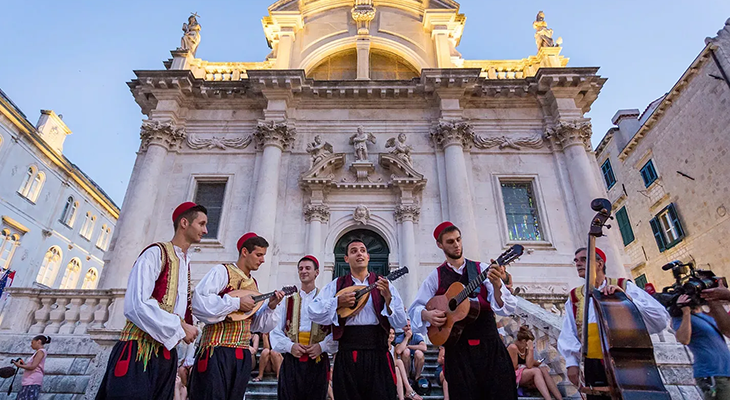
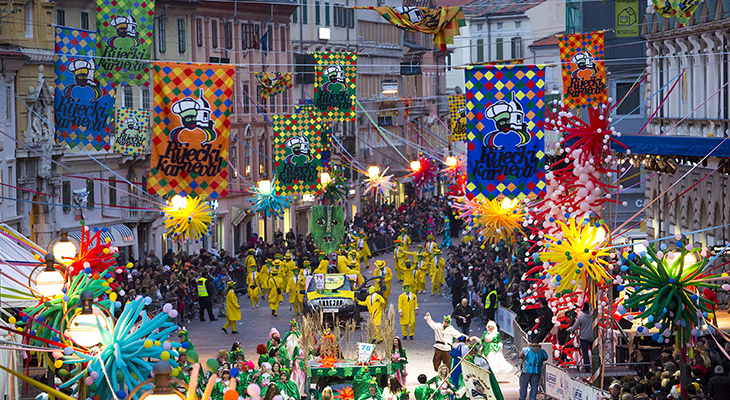
Crowds, Costs & Booking Strategy (incl. Ferries)
Peak vs. shoulder vs. off‑season: July–August bring top beach weather and the highest prices/queues. For a strong value‑to‑weather ratio, choose May–June or Sept–Oct and book ferries/hotels a few weeks in advance. Winters are cheapest, but coastal timetables slim down.
Ferries: Croatia’s network (Jadrolinija + private catamarans) runs year‑round on core lines, with more frequent summer schedules and some seasonal routes. The densest connections fan out of Split to Hvar, Brač, Vis, and Korčula; expect the most options June–September, while winter maintains essential island links at reduced frequency. Consider fast catamarans for speed and arrive early for car ferries in peak months.
- Lock ferry‑critical days (e.g., Vis or Lastovo) early in high season.
- Travel mid‑week to reduce sold‑out sailings and room pressure.
- For car ferries, arrive 30–60 minutes early in peak months.
National Parks & Active Adventures
Plitvice Lakes is magical year‑round, but spring (Apr–Jun) and autumn (Sep–Oct) balance waterfall flow, color, and crowds. Spring snowmelt swells cascades; autumn foliage makes emerald basins pop. Summer can be very busy; go at opening or late afternoon. Krka (near Šibenik) follows a similar calendar, with spring flow and summer crowds.
Cycling & hiking: Inland trails shine in April–June and September–October when daytime highs are comfortable and humidity lower. Coastal ridge walks (Biokovo, Pelješac) are stunning in shoulder months; bring sun protection even outside peak summer. Zagreb’s continental climate gives crisp fall air—great for long city‑to‑forest rambles.
Island‑Hopping Itineraries by Season (2 samples)
Itinerary A (Late May or September): Split → Brač → Hvar → Korčula (7–9 days)
- Why this window: Warm days, improving sea temps, lighter crowds, robust ferry schedules.
- Flow: Split (2 nights) → Brač (1–2) → Hvar (2–3) → Korčula (2).
- Notes: Book island‑to‑island catamarans in advance; dine late for emptier restaurants.
Itinerary B (October): Dubrovnik → Mljet → Pelješac → Split (8–10 days)
- Why this window: Warm seas early month, harvest vibes, excellent hiking temps.
- Flow: Dubrovnik (3) → Mljet (2) → Pelješac (1–2) → Split (2–3).
Unique Seasonal Windows (Lavender, Truffles, Harvests)
- Hvar Lavender (June–July): Peak lavender bloom yields purple slopes and local products (oils, sachets).
- Istrian White Truffles (Sept–Dec): Peak aroma and culinary festivals—pair with Rovinj or Motovun.
- Grape Harvest (September): Vineyards from Pelješac to Korčula buzz; book tastings ahead on weekends.
Quick Takeaways
-
May–June & September–October = best overall balance of weather, sea temps, and crowds for most travelers.
-
Warmest seas: July–September; August often peaks around ~25 °C in the south.
-
Festival energy: July–August (Ultra Europe; Dubrovnik Summer Festival).
-
Parks & hiking: April–June and Sept–Oct for comfort + scenery.
-
Budget-friendly culture: Late Nov–Jan (Advent markets; quieter coast).
-
Special seasons: Hvar lavender (Jun–Jul); Istrian truffles (Sept–Dec).
Conclusion
There isn’t a single “perfect” month for everyone, but there is a perfect match for your priorities. If you’re seeking the best balance of climate, sea conditions, prices, and elbow room, the shoulder months—May–June and September–October—are clear winners. You’ll find long, bright days on the islands, warm enough water for happy swims, and far easier logistics than the peak crush of July–August. The trade‑off? You forgo the most electric festival buzz, so if super‑charged nightlife is the goal, lean into summer and plan ahead.
Active travelers will love spring’s waterfall flow and autumn’s hiking temperatures; food lovers can time Istria’s white truffles or vineyard harvests; photographers get softer light and clearer horizons. Winter transforms the experience again: Advent in Zagreb fills city streets with cheer, and museum‑hopping becomes the main act. Decide whether it’s beach energy, park trails, festivals, or value and calm you want most—then use the notes above to plot your route. When you’re ready, hop into the Trespot Croatia chat rooms to find real‑time tips and travel buddies who’ll help turn a great plan into your favorite trip of the year.
FAQs — Best Time of Year to Visit Croatia
1) What is the best time of year to visit Croatia for beaches and nightlife?
July–August deliver the hottest days, warmest seas, and the liveliest nightlife, including Ultra Europe in Split. Book early and expect higher prices and crowds. June and September are strong if you want energy with slightly fewer people.
2) Is September a good month to swim in Croatia?
Yes—September keeps sea temperatures comfortably warm (often low‑mid 20s °C / 70s °F) while crowds thin. It’s a favorite for relaxed island‑hopping.
3) When is the best time to visit Plitvice Lakes?
Spring (Apr–Jun) for fuller waterfalls and greenery, and autumn (Sep–Oct) for color and cooler temps. Go early or late in the day during summer to avoid peak footfall.
4) Are ferries running in winter?
Core lines run year‑round, but frequencies drop and some seasonal routes pause. Check timetables close to travel—summer shows the most options.
5) What winter experiences are worth a trip?
Advent in Zagreb (late Nov–early Jan) is a standout, with markets, concerts, and skating rinks—great value and atmosphere.
Was this guide useful?
Tell us which month you’re targeting and why (beaches, festivals, parks, or budget?)—we’ll reply with a custom 3‑day Croatia micro‑itinerary tailored to your dates. And don’t forget to join the conversation in the Trespot Croatia chats to coordinate ferries and share island tips!
Question for you: Are you visiting for island‑hopping, national parks, festivals, or winter markets? Drop your answer below so others can connect with you.
References
- Lonely Planet — Best time to visit Croatia
- Rough Guides — When to go to Croatia
- kimkim — Best Time of Year to Visit Croatia
- Intrepid Travel — Best time to visit Croatia
- Audley Travel — Best Time to Visit Croatia
- WeatherSpark — Average Weather in Dubrovnik
- WeatherSpark — Average Weather in Split
- WeatherSpark — Average Weather in Zagreb


